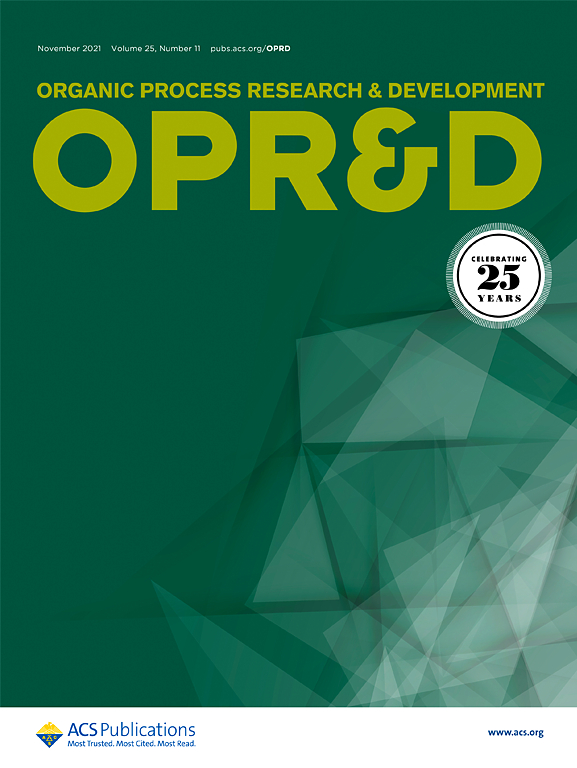A Novel Methodology for Efficient Removal of Residual Palladium from a Product of the Suzuki−Miyaura Coupling with Polymer-Supported Ethylenediamine Derivatives
IF 3.5
3区 化学
Q2 CHEMISTRY, APPLIED
引用次数: 34
Abstract
In our investigation to efficiently remove residual palladium from a drug candidate prepared via the Suzuki?Miyaura coupling reaction, it was found that polymer-bound ethylenediamines can absorb both Pd(0) and Pd(II). This property was applied to the removal of residual palladium from the crude 2‘-cyanobiphenyl product (R)-2 obtained by the Suzuki?Miyaura coupling of an optically active bromobenzene derivative (R)-1 with a boronate 3. Treatment with the polymer-bound ethylenediamines reduced the palladium content of the crude product from 2000?3000 to 100?300 ppm. Subsequent purification by salt formation with di-p-toluoyl-d-tartaric acid (DTTA) attained a low palladium content of less than 10 ppm.

一种高效去除聚合物负载乙二胺衍生物铃木-宫浦偶联产物中残留钯的新方法
在我们的研究中,有效地去除残留的钯从候选药物制备铃木?通过Miyaura偶联反应,发现聚合物结合的乙二胺可以同时吸附Pd(0)和Pd(II)。将这一特性应用于Suzuki?光学活性溴苯衍生物(R)-1与硼酸盐3的Miyaura偶联。聚合物结合的乙二胺处理降低了原油中钯的含量。3000到100?300 ppm。随后用二对甲苯-酒石酸(DTTA)成盐提纯得到的钯含量低于10 ppm。
本文章由计算机程序翻译,如有差异,请以英文原文为准。
求助全文
约1分钟内获得全文
求助全文
来源期刊
CiteScore
6.90
自引率
14.70%
发文量
251
审稿时长
2 months
期刊介绍:
The journal Organic Process Research & Development serves as a communication tool between industrial chemists and chemists working in universities and research institutes. As such, it reports original work from the broad field of industrial process chemistry but also presents academic results that are relevant, or potentially relevant, to industrial applications. Process chemistry is the science that enables the safe, environmentally benign and ultimately economical manufacturing of organic compounds that are required in larger amounts to help address the needs of society. Consequently, the Journal encompasses every aspect of organic chemistry, including all aspects of catalysis, synthetic methodology development and synthetic strategy exploration, but also includes aspects from analytical and solid-state chemistry and chemical engineering, such as work-up tools,process safety, or flow-chemistry. The goal of development and optimization of chemical reactions and processes is their transfer to a larger scale; original work describing such studies and the actual implementation on scale is highly relevant to the journal. However, studies on new developments from either industry, research institutes or academia that have not yet been demonstrated on scale, but where an industrial utility can be expected and where the study has addressed important prerequisites for a scale-up and has given confidence into the reliability and practicality of the chemistry, also serve the mission of OPR&D as a communication tool between the different contributors to the field.

 求助内容:
求助内容: 应助结果提醒方式:
应助结果提醒方式:


